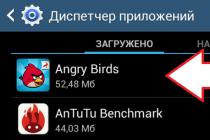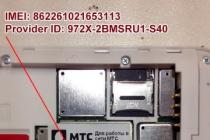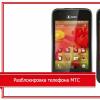May 2009
The more firmly digital technology enters the life of offices, the more actively they begin to use a wide variety of information media. Floppy disks were the first to appear on the office goods market, then they were addedCD andDVDs are now confidently coming into use as flash drives. Undoubtedly, in some cases, certain information storage devices turn out to be much more effective, and in some cases even an indispensable tool for working with various materials, which leads to an increase in demand for this type of product in the office segment and, accordingly, the introduction into the range and gradual expansion line of information carriers by operators of the market of goods for the office. Read about the situation in this segment of computer accessories, features of the offer, demand trends and development prospects in the current product review.
General situation
"Information carriers" are one of the most dynamically developing product groups: the first floppy disks did not have time to appear, as manufacturers brought out the following type of product - CDs and DVDs, and then USB drives and memory cards, external hard drives. What used to be often perceived as “luxury” in work is now becoming the norm of life and its invariable attribute, natural, like a pen or paper. That is why stationery companies have recently begun to introduce and develop the “Information Carriers” product line into their assortment, although in fairness it should be noted that far from all players of the stationery and office market can “boast” of a good selection of this type of product in the assortment.
Nevertheless, there is a growing interest in this group of goods among operators of the stationery market, as evidenced by experts from companies specializing in the distribution of computer equipment and accessories and supplying storage media, including to “clerical workers”.
“At the moment, the share of stationery companies offering storage media is small,” notes product manager for flash products at AKCent" Sergey Roshchin. “Although in the near future it can be significantly expanded due to the fact that flash drives are beginning to move from the category of computer accessories to the category of consumables that are vital for the modern office.”
“There are many stationery companies among our clients, and they occupy a significant share in the Information Carriers group,” says Merlion Business Development Department Manager Olga Shipulina. - In the near future, their share is likely to only grow, as storage media are increasingly moving into the stationery segment from the segment of technically complex goods, - she continues. - First of all, this applies to flash memory, as well as high-capacity USB hard drives - from 160 GB to 2 TB. This is the fastest growing segment, which has shown significant growth over the past six months or a year.”
The rapid development of the "Flash drives" group as one of the segments of the "Information carriers" and the tendency for them to crowd out other storage media is also noted. Sergey Roshchin (AK Cent), stating that they are increasingly competing with CDs and DVDs, especially in the low price segment.
Since information carriers are relatively new products for operators of the stationery market, it is impossible to talk about its saturation with this type of product. “The saturation of the market is low and many companies represent this segment rather narrowly,” states Alexei Tokarev, Head of Office Equipment Department, SAMSON Group of Companies. - Although the assortment of our company contains almost the entire range of storage media - floppy disks, CD-R / RW-, DVD-R / RW-disks, memory cards, and USB drives, and in the near future it is planned to introduce portable hard drives. “When it comes to flash drives, the market is also far from saturated,” adds Sergey Roshchin (AK Cent).
Perhaps that is why storage media is the most profitable group in the "Computer Accessories" segment, as also evidenced by experts. “In the Computer Accessories segment, the Information Carriers group is one of the most profitable,” notes Alexey Tokarev ("SAMSON"). "Flash cards, USB sticks and external HDD- and SSD drives make up more than half of our assortment and are clearly the leaders in terms of profit," states Sergey Roshchin (AKCent"). “Profitability in this segment is traditionally good, and this is also why the product group is developing dynamically,” confirms Olga Shipulina (Merlion).
Players & Demand Features
Diagram 1. Shares of different consumer groups in the total flow of demand for information carriers (according to the data of the company "AK Cent")
The composition and shares of players in different subgroups of information carriers vary. If we talk about the subgroup "Diskettes", then, according to Alexey Tokarev ("SAMSON"), the most popular brands are Verbatim, Imation, Emtec/BASF, TDK, SONY. “Verbatim is leading the way with about 25% of all sales,” he adds.
“The market for recordable optical media (CD/DVDs) is divided into two segments: no name discs and products from well-known companies such as TDK or Verbatim. In the first segment, only the price matters, while in the second segment, the emphasis is on the brand image,” he continues.
If we talk about the group "Flash drives", then here, according to Sergey Roshchin (AK Cent), leading brands are Transcend and Kingston, which occupy approximately 30% of the flash memory market each. “Followed by such brands as Sony - 10%, Apacer - 7%, A-Data - 5%, as well as a number of others, the share of which is in the range up to 5%: OCZ, SanDisk, PQI, etc.", he adds.
Sergey Roshchin: Remember when was the last time you bought pens or post-it blocks for your home? What for? After all, they are issued with the company logo at work. The same will soon happen with USB drives. They just don't have the manufacturer's logo on them.
According to Olga Shipulina (Merlion), the picture with the distribution of shares between the players today is not so clear. “In the current volatile environment, it's impossible to say anything with certainty about market shares or established demand and market segments, and the Media Group is no exception,” she notes. “Now the products of cheap brands are becoming more and more in demand, because in addition to the low price, they also began to offer good design today and “pulled themselves up” in product quality.”
In addition to foreign players, domestic manufacturers also present their products on the Russian market. However, as rightly noted Sergey Roshchin (AK Cent), there is no need to talk about their significant share. “In most cases, these are Private Labels of domestic distributors and retailers,” he adds.
The competition between the players is quite tough. “In the flash memory market, this is due to a fairly large number of distributors and the predominance of price competition in the market,” analyzes Sergey Roshchin (AK Cent). - In the low price segment of capacities up to 2 GB, competition is so intense that many distributors work exclusively with the most popular positions in the middle and upper price ranges, - he continues. - As for our company, we try to maintain the maximum range of products for each vendor, which, coupled with an attractive price, allows us to maintain a leading position in the market for many years. Regarding no name products, we can say that its main consumers are advertising agencies and the corporate sector, which is engaged in applying their own logos to these flash drives. Now flash drives with the company logo are becoming a fairly common element of corporate style, along with pens and diaries.

Scheme 1. Classification of information carriers
Quite a strong competition exists in the segment of CD- and DVD-discs, and the main struggle also takes place between branded and no name products. The most calm situation in this respect, perhaps, remains in the floppy segment, which, due to their low cost and limited demand, are not of particular interest to manufacturers of non-branded products.
Analyzing the distribution of demand for flash drives, Sergey Roshchin (AK Cent) notes that, according to a rough estimate, up to 60-70% of demand falls on Moscow and the region, the rest is other regions. “However, smaller distribution companies purchasing goods in Moscow are engaged in further distribution of goods, including in the regions,” he notes. - The same can be said about federal retail and cellular networks. Therefore, it is approximately possible to estimate the shares of consumption of "flash" in Moscow, the Moscow region and in other regions of Russia as equal.
The growth in demand for information carriers in the regions is also evidenced by Olga Shipulina (Merlion). “There was a pent-up demand in the regions when the consumer began to buy high-tech goods and, accordingly, the demand for information carriers increased,” she states.
Speaking about the peculiarities of the demand for information carriers, Sergey Roshchin (AK Cent) draws attention to the fact that the demand for flash memory has a pronounced seasonality. “In the spring-summer period, sales of flash cards predominate, and in the autumn-winter period, USB drives dominate,” he explains. “This is partly due to the specifics of using these devices: in the summer, during the holidays, cards for cameras and phones are needed, and in the fall, schoolchildren and students buy USB drives for data exchange.”
At the same time, it is in the segment of flash drives, as the most dynamically developing and the most expensive one, that today we can talk about the highest level of requirements for product quality. Although, according to Sergei Roshchina (AK Cent), and it is not the main one. “Most flash drives become morally obsolete much faster than they physically fail, and the warranty period for some of them extends to the entire period of operation,” he explains. - In general, for flash cards, the quality indicator is the data transfer speed, for USB drives - the design and quality of its execution: material, assembly, sometimes even packaging.
floppy disks
“At the end of the last decade, computer market experts unanimously assured: the time for 3.5-inch floppy disks or, in other words, floppy disks is running out - another year or two, and they will be completely ousted from the market,” says Alexey Tokarev ("SAMSON"). "The floppy disk market is indeed shrinking, but much slower than predicted."
 Today, according to Alexey Tokarev ("SAMSON"), volume Russian market diskettes ranges from 2 to 3 million media per month. "Experts cite several reasons for the relentless popularity of floppy disks," he continues. - Firstly, it is quite low cost compared to alternative devices such as flash memory and magneto-optical disks. Secondly, floppy disks are often used to store information that can be used to restore a computer to working capacity after a failure. But most main reason The "survivability" of floppy disks is, perhaps, the cheapness of disk drives that are sold for no more than $ 10, ”he concludes.
Today, according to Alexey Tokarev ("SAMSON"), volume Russian market diskettes ranges from 2 to 3 million media per month. "Experts cite several reasons for the relentless popularity of floppy disks," he continues. - Firstly, it is quite low cost compared to alternative devices such as flash memory and magneto-optical disks. Secondly, floppy disks are often used to store information that can be used to restore a computer to working capacity after a failure. But most main reason The "survivability" of floppy disks is, perhaps, the cheapness of disk drives that are sold for no more than $ 10, ”he concludes.
One way or another, but floppy disks today have retained several niches that allow them to occupy a relatively stable market share for the time being. The demand for them is maintained thanks to:
Government agencies in which the park computer science very budgetary, in connection with which 3.5 "floppies are used for file exchange;
Individual universities, especially peripheral ones, in which students resort to the use of diskettes as a practically uncontested means for transferring term papers or other work;
Some areas (for example, banking), where software is still used that requires a key floppy disk to access the program or any data;
Computer "enthusiasts" who sometimes keep a disk drive in their computer, since all operating systems up to Windows XP only accept drivers (at the installation stage) from a floppy disk, and it is easier to create a bootable flash drive for Windows XP by first making a boot floppy disk.
Diagram 2. The share of different types of drives in the assortment of companies

Thanks to the above groups, floppy disks and floppy disk drives remain quite in demand today.
In the assortment of companies you can find black or assorted floppy disks (green, red, yellow, blue, orange, etc.) in a package. They can be sold both in cardboard packaging and in plastic boxes. However, all these "frills" today do not have a significant impact on demand. The classic black floppy disks packed in a more economical cardboard box remain the most popular.
Disks
Demand for CDs and DVDs is significantly higher than for floppy disks, although it can be noted that with the proliferation of higher-capacity DVDs, demand for CDs has stagnated. “The share of CDs has been declining in recent years, and no wonder. These media are no longer enough for large amounts of information, for example, for video, and the price of "blanks" is almost equal to the prices for more capacious media, states Alexey Tokarev ("SAMSON"). - Yes, and drives that do not support the work of DVDs are slowly becoming the property of history, - he continues. - However, in absolute terms, the supply of such media is still very high. This is largely due to the fact that a large number of household equipment purchased earlier does not understand other formats. In other words, if we need compatibility with an old household player or radio, then we need to buy a CD. And in general, in terms of ensuring maximum compatibility, this format remains the most optimal so far: any optical drive will read a CD. Plus, laptops with a combo drive are still being sold, so their owners, if they want to write something to the “optics”, have no choice,” he concludes.
Both those and other optical storage media have their advantages, and each gradually occupies its own niche in the market. CDs have more storage capacity than floppies and are not as expensive as DVDs. Therefore, they are the best option for recording and mass distribution of presentations, training programs, catalogs, promotional materials, applications for printed publications, as well as for creating archives, etc. -disks - DVDs” (see Diagram 4). DVDs are used in areas where you have to work with large documents (for example, in design, engineering departments).
Blu-ray disc (BD disc)
Blu-ray technology uses a 405nm blue-violet laser to read and write. Conventional DVDs and CDs use red and infrared lasers at 650nm and 780nm respectively. Reducing the wavelength in the Blu-Ray technology made it possible to narrow the recording track by half compared to a conventional DVD disc and increase the data recording density. In other words, the shorter wavelength of the blue-violet laser allows more information to be stored on a 12cm Blu-Ray disc than on a CD/DVD of the same size.
If we analyze the range of CDs and DVDs offered on the office goods market today, we can note that the products are presented quite widely. These are usually several brands and no name products, covering all price segments and, accordingly, a different type of package with a different number of discs in the package itself.
The range of disposable CDs and DVDs is the most widely represented (when compared with the line of reusable discs): both in terms of the number of pieces in a package and the type of packaging, in terms of color, and the possibility of printing on the surface of the disk.
In the range of CD-R and DVD-R discs (disposable) in terms of the number of items in a package, the largest number of positions falls most often on packages of 10 discs. Products in packs of 25, 50 and 100 discs are also widely represented. At the same time, the cakebox is increasingly becoming the most popular type of packaging as it is cheaper, and with large “lots” of 50 and 100 discs, it is practically the only possible one. However, storing archival materials in “cakeboxes” in offices is quite inconvenient, as it makes it difficult to search and retrieve desired disk from the total mass strung, as in a children's pyramid, one on top of the other "blanks".
Some companies offer discs in shrink packaging, in which the discs are packaged by quantity and wrapped in a conventional shrink film - this is perhaps the most economical type of packaging, but it is quite rare in the supplier's product line. Such "blanks" will definitely require additional expenses for storage accessories - either plastic cases, or pockets for discs, or cases and special boxes.
Discs in jewel ("thick") and slim ("thin") plastic cases are usually offered in cardboard packages with a capacity of up to 10 pieces. According to Alexey Tokarev ("SAMSON"), slim cases are more compact and cheaper, so they are in great demand. In general, the advantage of discs in cases is that they can be sold without problems both in packages and individually - the case will protect the "blank" from mechanical damage during transportation and save the client from having to solve the problem of "what to wrap and put in" .
Of particular interest among disposable discs are media with the ability to print on the surface. As noted Alexey Tokarev ("SAMSON"), this type of optical media is in demand in the corporate segment.
CD-RW and DVD-RW- (reusable) discs are usually offered in much smaller quantities in a package and more often - by the piece and in jewel cases, since this type of box protects optical media from damage to the maximum.
It was the “reusability” of disks that determined the noticeably lower demand for them. Firstly, they can be used several times, and, accordingly, the need to buy more of them arises much less frequently, and secondly, they are, of course, more expensive than disposable discs, so they are bought precisely when there is a purposeful need to write several once. And given that the market is quite wide and reasonable prices more “advanced” storage media are presented, colloquially referred to as “flash drives”, which allow you to record much larger amounts of information, a much larger number of times, while the devices themselves are undoubtedly smaller than disks, and the information on them is more protected from mechanical influences. All this, ultimately, leads to the fact that the consumer is increasingly opting for "flash drives".
 For the same reason, double-sided discs are not widely used. “Demand for these is quite limited due to the fact that they are expensive and there are currently other media that can provide more information storage,” notes Alexey Tokarev ("SAMSON").
For the same reason, double-sided discs are not widely used. “Demand for these is quite limited due to the fact that they are expensive and there are currently other media that can provide more information storage,” notes Alexey Tokarev ("SAMSON").
Another existing type of disc is Blu-Ray or BD (from the English blue ray - "blue ray") - an optical media format used to record and store digital data, including high-definition video with increased density. This type of storage media is also present in the range of some companies, but has not yet received wide distribution for a number of reasons. "It's hard to say about the future of BD discs," comments Olga Shipulina (Merlion)- I think they are in demand and will remain in demand only in the segment of licensed films, games and other content sold only on discs.
According to the same Alexey Tokarev ("SAMSON"), drives for BD-discs are becoming more massive, the discs themselves are getting cheaper, so in the next couple of years "the format will continue to advance."
Flash drives, memory cards, portable hard drives
This segment of storage media, according to Sergey Roshchin (AK Cent), is distinguished by a constant downward price trend and a constant increase in the amount of memory of the digital media themselves. “Six months ago, the main sales were for 1 GB and 2 GB media, now the most popular volume is already 2 GB and 4 GB, and 1 GB has practically disappeared from the assortment,” he comments. “It is likely that by the end of the year it will be difficult to find a USB flash drive with a capacity of 2 GB, and 4 GB and 8 GB will be the best sellers.”
 Alexey Tokarev ("SAMSON"), characterizing the specifics of the segment, adds that, unlike "optics", where there is a simple redistribution of market shares, the segment of flash drives is growing on its own. "The proliferation of digital cameras, flash card camcorders and other digital devices predicts significant growth in flash card sales," he adds.
Alexey Tokarev ("SAMSON"), characterizing the specifics of the segment, adds that, unlike "optics", where there is a simple redistribution of market shares, the segment of flash drives is growing on its own. "The proliferation of digital cameras, flash card camcorders and other digital devices predicts significant growth in flash card sales," he adds.
According to Olga Shipulina (Merlion), the main advantage of flash memory over hard drives and CD-ROM media is that it consumes significantly (about 10-20 or more times) less energy during operation. “In addition, flash memory is smaller than most other mechanical media, more reliable and more durable,” she notes. “The information recorded on it can be stored from 20 to 100 years and is able to withstand significant mechanical loads, 5-10 times higher than the long-term allowable for conventional hard drives.”
Types of flash drives
 |
USB Flash Drive or USB flash drive (flash drive, USB drive, or "flash drive")- a storage medium that uses flash memory to store data and is connected to a computer or other reading device via a standard USB connector. It is the latter that distinguishes this type of storage media from memory cards. |
 |
Multimedia Card (MMC)- portable memory card used in digital cameras, mobile phones, etc. Size 24x32x1.5 mm. Developed jointly by SanDisk and Siemens. The MMC contains a memory controller and is highly compatible with various types of devices. Generally, MMC cards are supported by devices with an SD slot. Three additional modifications of MMC cards: RS-MMC, MMCmobile and MMCmicro, which require an adapter to ensure compatibility with the standard MMC slot. RS-MMC(Reduced Size MultiMedia Card): half the length of a standard MMC card (reduced size = "reduced size"): 18x24x1.4 mm. All other characteristics do not differ from the characteristics of a "regular" MMC card. DV-RS-MMC(Dual Voltage Reduced Size MultiMedia Card): Dual voltage DV-RS-MMC memory cards (dual voltage = "double voltage": 1.8 and 3.3 V) have reduced power consumption and allow the device to work a little longer. The dimensions are the same as those of the RS-MMC. MMCmicro: a miniature memory card for mobile devices with even smaller dimensions than RS-MMC: 12x14x1.1 mm. |
 |
SD card(Secure Digital Card) - Supported by SanDisk, Panasonic and Toshiba. It is a further development of the MMC standard. In terms of size and characteristics, they are very similar to MMC, only a little thicker (24x32x2.1 mm). The main difference is copyright protection technology (secure digital = "secure digital"), which allows you to protect access to the card with a password. Unlike MMC cards, SD cards are also equipped with a mechanical switch for write protection, file deletion, and card formatting. This type of protection is assigned to the device that works with the card, so it may not be implemented. In most cases, the SD can be replaced with an MMC card. Reverse replacement is usually not possible due to the thicker thickness of SD cards. There are 2 modifications of SD cards: SDTF(Trans-Flash) and SDHC(High Capacity = "high capacity") - SDTF and SDHC cards and their readers differ in the limitation on maximum capacity media - up to 2 GB for TF and up to 32 GB for HC. SDHC readers are backwards compatible with SDTF and will easily read an SDTF card, but an SDTF device will only see 2 GB of the SDHC capacity if it has a larger capacity, or will not be read at all. Both subformats can be of three sizes: standard SD (24x32x2.1 mm), miniSD (20x21.5x1.4 mm) and microSD (11x15x1 mm). An adapter is required for compatibility with the standard SDmini and micro slot. |
 |
Memory Stick (MS)- a storage medium based on flash memory technology from Sony Corporation. Memory Stick media is used in camcorders, digital cameras, personal computers, printers, PSP game consoles, cell phones and other electronic devices predominantly by Sony itself. Standard dimensions: 21.5x50x2.8 mm. MS Duo/MS Pro Duo- have smaller dimensions (20x31x1.6 mm) and high data transfer rate (up to 20 Mb/s). MSmicro- has even smaller dimensions (12.5x15x1.2 mm). |
 |
Compact Flash (CF)- flash memory format, which appeared one of the first. Developed by SanDisk. Used in PDAs, digital video and photo cameras, printers, etc. Dimensions: 43x36x3.3 mm. One of the most important advantages of CF is compatibility with the PCMCIA-ATA standard, the most common for small devices. |
 |
Smart Media (SM)- format developed by Toshiba. Unlike CF cards, SM cards do not have a built-in controller, which slightly worsens compatibility - older devices do not always understand high-capacity cards. Dimensions: 37x45x0.76 mm. Memory cards of this format are currently out of production. |
 | eXtreme Digital (хD), a new name - xD-Picture Card - the format is designed for use in Olympus and Fuji digital cameras. Other brands that make xD cards include Kodak, SanDisk, and Lexar. Developed as a replacement for the Smart Media format. Compared to SM, the xD format is more versatile, compact (size 20x25x1.7 mm), has a higher data transfer rate, reduced power consumption and a larger capacity. Unlike SD/MMC cards, xD cards are not equipped with a controller chip, and therefore they have a relatively small size and low speed performance compared to SD/MMC cards. The cost of xD cards is on average twice the cost of SD cards of the same size, despite the fact that XD cards do not have any special advantages over SD cards. |
There are several types of flash drives. All of them can be conditionally divided into 3 groups: flash drives (or simply “flash drives”), memory cards and SSDs, which are often considered together with magnetic external HDD drives.
As noted Olga Shipulina (Merlion), for the office, the most popular are flash drives and external HDDs and SSD drives. “Cards are less popular, as they are used more actively in multimedia devices: phones, smartphones, PDAs, photo and video equipment,” she adds.
SSD drive
(from English SSD, Solid State Drive, Solid State Disk) - a solid-state drive, a rewritable computer storage device without moving mechanical parts (unlike HDD). There are solid-state drives based on the use of volatile (RAM SSD) and non-volatile (NAND or Flash SSD) memory. "Stuffing" SSD physically has nothing to do with traditional hard drives (HDD) and is a flash memory array with a hard drive interface and access to a PC (according to traditional SATA interfaces or PATA). Outwardly, it differs from HDD only in more compact dimensions. SSD has all the advantages and disadvantages of flash memory.
“Among USB drives, flash drives are in the lead - 80%,” states Sergey Roshchin (AK Cent). - Portable external hard drives (HDD) also find their buyers, which offer larger capacities (up to 1000 GB) with the convenience of conventional USB drives - 15%. Mass distribution of the latest solid state drives SSD is still limited by a relatively high price compared to HDD, their share in the USB-drive market is still only 5%, but this type of media has a very great potential for development, since they have a USB interface, HDD-disk capacity and flash memory. memory, unlike HDDs that have mechanical elements.
Diagram 3. The ratio of USB-drives and memory cards in the range of companies
“Among flash cards, the undisputed leader is micro CD - about 50% of all card sales, - since they are used in almost every “mobile phone,” continues Sergey Roshchin (AK Cent). - Further, the most significant are Secure Digital memory cards used in professional photo equipment and communicators - 30%, MemoryStick (MS Pro Duo and MS Micro M2) due to their lobbying by SONY - 10%, and Compact Flash - 7%. The rest of the standards are now practically "extinct", - he states. “Nevertheless, MS Pro Duo and SD cards will be more interesting as an office option, which can be used to expand the memory of laptops and netbooks and, accordingly, their capabilities, since the capacity of flash media is sometimes comparable to the capacity of the built-in disk.”
In assessing the parameters that affect the choice of certain devices by customers, experts disagreed ( see table 1). Moreover, the evaluation of the parameters itself also caused difficulties, since in different situations, in relation to different types of flash drives and in different market segments, their significance varies. So, according to Sergey Roshchin (AK Cent), such a parameter as a brand turns out to be important mainly for corporate customers who have high requirements for reliability, for example, for banks or for tender deliveries, where a particular brand is clearly indicated. “Retail usually sells the brand that is on the counter and advertised by a skilled consultant,” he adds.
Moreover, according to Sergey Roshchin (AK Cent), it is difficult to determine the significance of such a parameter as the "capacity" of the drive. “Typically, the end user buys the highest possible capacity stick that fits into the amount they can afford to spend on it, regardless of whether that amount is relevant now or not,” he explains.
It is interesting to note that, unlike the demand for many other office products, the demand for storage media such as flash drives is often driven by packaging. “Packaging / blister - bright, stylized - is sometimes much more important than the brand and is on a par with the design of the flash drive itself,” emphasizes Sergey Roshchin (AK Cent). - Concerning the design of products, we can say that in the office segment drives in a strict design and in classic colors and materials are more in demand - a simple plastic rectangle in black or corporate color. However, “flash drives” of an original design are often used as representative functions, for example, drives stylized as the company’s products, or “flash drives” with an expensive, exclusive case finish - for example, made of genuine leather or with Swarovski crystals. The importance of the materials from which the body of the product is made is evidenced by Olga Shipulina, arguing that they influence the choice of a particular drive in the same way as the brand and country of origin.

Diagram 4. The ratio of sales volumes of CD-/DVD-disks, floppy disks in 2008 in the assortment of SAMSON Group

Experts also draw attention to the fact that small flash drives are not so easy to use, and although they are present in the assortment of companies, they are in limited demand. “The very small size of a flash drive is more of a publicity stunt than a demanded necessity, and has a number of disadvantages: lower body strength, insecure USB connector, and, corny, such a flash drive is much easier to lose and harder to find in a pocket or bag,” - explains Sergey Roshchin (AK Cent).
Such a parameter as the speed of information exchange (read / write), according to Sergey Roshchin (AK Cent), does not significantly affect the choice of USB drive and highest value has mainly when buying Compact Flash cards used in professional photographic equipment. “Otherwise, price is more important,” he adds. - At the same time, an increase in prices for the same type of product usually leads to a shift in demand for cheaper analogues, if these are mutually competing brands, such as Transcend and Kingston. Design and brand image play a less significant role here.”
When working with memory cards, you should remember a few basic rules:
- electrostatic discharge can damage electronic components, therefore, before touching the memory card, you need to make sure that you are not static electricity by touching a grounded metal object;
- avoid touching the gold-plated contacts of the memory card;
- it is necessary to protect the memory card from sources of heat, direct sunlight, and humidity;
- do not bend and throw a memory card;
- you should never turn off the memory card during the transfer of information in order to avoid data loss or damage to the card itself;
- Before use, it is better to make sure that the card and the device are compatible.
Regarding the capacity of "flash drives", as noted earlier, the most popular at the moment are drives with a capacity of 2 GB and 4 GB, and models with a capacity of 8 GB are currently considered the most promising. Although, according to Sergey Roshchin (AK Cent), the presence of larger-capacity flash drives in the assortment is also necessary for the full assortment and the gradual “getting used” to them by the user.
Diagram 5. The share of USB-drives of different capacities in the range of companies

Conclusion
All experts admit that disks, just like floppy disks, will soon, if not become a thing of the past, be significantly replaced by flash drives. “Dynamics of demand will shift towards USB-flash and low-cost large-capacity memory cards, as well as low-cost portable USB HDDs up to 500 GB,” predicts Olga Shipulina (Merlion). And many factors, in her opinion, will contribute to this process: the market being filled with all kinds of devices that allow the use of memory cards, and the displacement of disks by “flash drives” and small SSD / HDD, and greater versatility and ease of use of these devices for all categories of consumers , and greater protection of the recorded information from mechanical influences.
The same opinion is shared by Sergey Roshchin (AK Cent), noting that the segment of flash media is just beginning to take shape. “As storage capacity grows and costs drop, USB flash drives can significantly replace CDs as a tool for storing and transferring information outside of a company (presentations, advertising, etc.),” he comments. - Without a doubt, this "souvenir" will be used repeatedly, unlike the disk, and this is a serious argument in favor of flash drives. Moreover, many modern laptops are starting to get rid of built-in DVD drives. And even “office blondes” understand the process of writing to a USB flash drive, which cannot be said about burning a CD or DVD.
 Such a group of drives as flash drives for applying information to the case has special prospects. “Pretty soon, in most companies, flash drives with a company logo and a small presentation will be available to every employee, just like a pen and business cards,” predicts Sergey Roshchin (AKCent"). “And their sales to the corporate sector may be comparable to retail sales.”
Such a group of drives as flash drives for applying information to the case has special prospects. “Pretty soon, in most companies, flash drives with a company logo and a small presentation will be available to every employee, just like a pen and business cards,” predicts Sergey Roshchin (AKCent"). “And their sales to the corporate sector may be comparable to retail sales.”
We thank the companies "AK Cent", "Merlion", "SAMSON" for their help in preparing the product review.
Electronic media
The technology of recording information on magnetic media appeared relatively recently - approximately in the middle of the 20th century (40s - 50s). But already a few decades later - in the 60s - 70s - this technology became very common throughout the world.
A magnetic tape consists of a strip of a dense substance onto which a layer of ferromagnets is deposited. It is on this layer that information is "remembered". The recording process is also similar to the process of recording on vinyl records - with the help of a magnetic induction coil, instead of a special apparatus, a current is supplied to the head, which drives the magnet. The recording of sound on a film occurs due to the action of an electromagnet on the film. The magnetic field of the magnet changes in time with sound vibrations, and due to this, small magnetic particles (domains) begin to change their location on the surface of the film in a certain order, depending on the effect of the magnetic field created by the electromagnet on them. And when playing the recording, the reverse recording process is observed: the magnetized tape excites electrical signals in the magnetic head, which, after amplification, go further to the speaker.
Compact cassette (audio cassette or simply cassette) is a storage medium on magnetic tape, in the second half of the 20th century it was a common media carrier for sound recording. Used to record digital and audio information. The first compact cassette was introduced in 1964 by Philips. Due to its relative cheapness for a long time(from the early 1970s to the 1990s) the compact cassette was the most popular recordable audio medium, however, since the 1990s,
has been superseded by CDs.
There are many in the world today various types magnetic media: diskettes for computers, audio and video cassettes, reel tapes, etc. But new laws of physics are gradually opening up, and with them new possibilities for recording information. Just a couple of decades ago, a lot of information carriers appeared based on new technology- reading information using lenses and a laser beam.
The development of material carriers of documented information as a whole follows the path of continuous search for objects with high durability, large information capacity with minimal physical dimensions of the carrier. Since the 1980s, optical (laser) discs have become more and more widespread. These are plastic or aluminum discs designed to record and reproduce information using a laser beam.
According to the technology of application, optical, magneto-optical and digital CDs are divided into 3 main classes:
1. Discs that allow one-time recording and multiple playback of signals without the possibility of erasing them (CD-R; CD-WORM - Write-Once, Read-Many - recorded once, counted many times). They are used in electronic archives and data banks, in external computer drives.
2. Reversible optical discs that allow multiple recording, playback and erasing of signals (CD-RW, CD-E). These are the most versatile discs that can replace magnetic media in almost all areas of application.
3. Digital universal video discs DVD (Digital Versatile Disk) such as DVD-ROM, DVD-RAM, DVD-R with large capacity(up to 17 GB).
The name of optical discs is determined by the method of writing and reading information. Information on the track is created by a powerful laser beam that burns depressions on the mirror surface of the disk, and is an alternation of depressions and reflective areas. When reading information, the mirror islands reflect the light of the laser beam and are perceived as a unit (1), the cavities do not reflect the beam and, accordingly, are perceived as zero (0). This principle makes it possible to achieve a high density of information recording and, consequently, a large capacity with minimal dimensions. A CD is an ideal means of storing information - cheap to ridiculous, practically not subject to any environmental influences, the information recorded on it will not be distorted or erased until the disk is physically destroyed, has a capacity of 700 MB.
A magneto-optical disk is an information carrier that combines the properties of optical and magnetic storage media. The disc is made using ferromagnets. Magneto-optical disks, with all their advantages, have serious drawbacks: a relatively low write speed, caused by the need to erase the contents of the disk before writing, and after writing, by checking for reading; high energy consumption - lasers of significant power are required to heat the surface, and therefore high energy consumption. This makes it difficult to use MO recorders in mobile devices.
DVD (di-vi-dim, eng. Digital Versatile Disc - digital multi-purpose disc) - a storage medium in the form of a disk, outwardly similar to a CD, but having the ability to store a larger amount of information due to the use of a laser with a shorter wavelength, than conventional CDs. The first discs and DVD players appeared in November 1996 in Japan and in March 1997 in the USA. They were intended for recording and storing video images. Interestingly, the first 3.95 GB DVDs cost $50 apiece. Currently, there are six varieties of such disks with capacities ranging from 4.7 to 17.1 GB. They are used to record and store any information: video, audio, data.
Working with information in our time is unthinkable without a computer, since it was originally created as a means of processing information, and only now it has begun to perform many other functions: storage, transformation, creation and exchange of information. But before it took on its current form, the computer underwent three revolutions.
The first computer revolution came to an end
50s; its essence can be described in two words: computers appeared.
They were invented at least ten years before, but it was at that time that mass-produced machines began to be produced, these machines ceased to be an object of research for scientists and a curiosity for everyone else. A decade and a half after that, no large organization could afford to do without a computer center. If at that time there was talk of a computer, one immediately imagined computer rooms filled with racks, in which people in white coats were thinking intensely. And then the second revolution happened. Almost simultaneously, several firms discovered that the development of technology had reached such a level that it was not necessary to erect a computer center around the computer, and the computer itself became small. These were the first minicomputers. But a little more than ten years passed, and the third revolution came - in the late 70s, personal computers arose. In a short time, having gone from a desktop calculator to a full-fledged small machine, PCs have taken their place on the desktops of individual users.
At the very moment when the first computer processed several bytes of data for the first time, the question immediately arose: where and how to store the results? How to save calculation results, text and graphic images, arbitrary data sets?
First of all, there must be a device with which the computer will store information, then a storage medium is required on which it can be transferred from place to place, and another computer should also easily read this information. Let's take a look at some of these devices.
1. Punch card reader: designed to store programs and data sets using punch cards - cardboard cards with holes punched in a certain sequence. Punched cards were invented long before the advent of the computer, with their help, very complex and beautiful fabrics were obtained on looms, because they controlled the operation of the mechanism. If you change the set of punched cards, the fabric pattern will be completely different - it depends on the location of the holes on the card. With regard to computers, the same principle was used, only instead of a fabric pattern, the holes gave commands to the computer or data sets. This way of storing information is not without drawbacks: - very low speed of access to information; - a large volume of punched cards for storing a small amount of information; - low reliability of information storage; - besides, small circles of cardboard constantly flew from the puncher, which fell on their hands, in pockets, got stuck in their hair and the cleaners were terribly unhappy. People were forced to use punched cards not because they somehow particularly liked this method, or it had some undeniable advantages, not at all, it had no advantages at all, it was just that at that time there was nothing else, there was nothing to choose from , had to get out.
2. Tape drive (streamer): based on the use of a tape recorder type device, and magnetic tape cassettes. This method of information accumulation has been known for a long time and is successfully used today. This is explained by the fact that a rather large amount of information is placed on a small cassette, information can be stored for a long time and the speed of access to it is much higher than that of a punched card reader. On the other hand, the streamer is suitable only for accumulation, storage of large amounts of information, data backup. It is practically impossible to process information using a streamer: a streamer is a sequential data access device: to get the 5th file, we must scroll through four. And if you need the 7529th?
3. Drive on floppy disks (NGMD - disk drive). This device uses floppy disks as a storage medium - floppy disks, which can be 5 or 3 inches. A floppy disk is a magnetic disk like a record placed in a cardboard sleeve. Depending on the size of the diskette, its capacity in bytes changes. If up to 720 KB of information fits on a standard 5"25" floppy disk, then 1.44 MB is already on a 3"5" floppy disk. Floppy disks are universal, suitable for any computer of the same class equipped with a disk drive, they can be used for storing, accumulating, distributing and processing information. The drive is a parallel access device, so all files are equally easily accessible. The disadvantages include a small capacity, which makes long-term storage of large amounts of information almost impossible, and the not very high reliability of the floppy disks themselves.
4. A hard disk drive (HDD - hard drive): is a logical continuation of the development of magnetic information storage technology. They have very important advantages: - extremely large capacity; - simplicity and reliability of use; - the ability to access thousands of files simultaneously; - high speed data access.
5. CDs and DVDs already considered by us.
But since the flow of information is only increasing, it is necessary to develop more and more new tools and devices for its creation, processing, storage and transmission.
We have already discussed above the storage of data on CDs and DVDs. Despite their convenience, due to the need to use the largest possible amount of information, the process of their displacement is already beginning. In the coming years, in personal computing devices such as computers, flash memory will be a formidable rival to hard drives.
6. Flash memory (English Flash-Memory) -- a kind of solid-state semiconductor non-volatile rewritable memory.
Due to its compactness, low cost and low power requirements, flash memory is already widely used in portable devices operating on batteries and accumulators - digital cameras and camcorders, digital voice recorders, MP3 players, PDAs, mobile phones, and smartphones. In addition, it is used to store embedded software in various peripheral devices (routers, PBXs, communicators, printers, scanners). It does not contain moving parts, so, unlike hard drives, it is more reliable and compact.
The main weak point of flash memory is the number of rewrite cycles. It can be read any number of times, but such memory can only be written to a limited number of times (usually about 10,000 times). Although there is such a limit, 10,000 write cycles is much more than a floppy disk or CD can handle. Flash memory is best known for its use in USB flash drives. Due to its high speed, volume and compact size, USB flash drives are already displacing CDs from the market.
In the era of the formation of human society, cave walls were enough for people to record the information they needed. Such a "database" would fit in its entirety on a megabyte flash drive. However, over the past few tens of thousands of years, the volume of information that a person is forced to operate has increased significantly. Now disk drives are widely used for data storage and cloud storage data.
It is believed that the history of recording information and its storage began about 40 thousand years ago. The surfaces of the rocks and the walls of the caves have preserved images of representatives of the animal world of the Late Paleolithic. Much later, clay plates came into use. On the surface of such an ancient “tablet”, a person could apply images and make notes using a pointed stick. When the clay composition dried, the record was fixed on the carrier. The disadvantage of the clay form of storing information is obvious: such tablets were fragile and short-lived.
About five thousand years ago in Egypt, they began to use a more advanced carrier of information - papyrus. Information was entered on special sheets, which were made from specially processed plant stems. This type of data storage was more advanced: papyrus sheets are lighter than clay tablets, and it is much more convenient to write on them. This type of information storage survived in Europe until the 11th century AD.
In another part of the world - in South America - in the meantime, the cunning Incas invented knot writing. Information in this case was fixed with the help of knots, which were tied in a certain sequence on a thread or rope. There were entire "books" of bundles, which recorded information about the population of the Inca empire, about tax collections, and the economic activities of the Indians.
Subsequently, paper became the main carrier of information on the planet for several centuries. It was used for printing books and media. At the beginning of the 19th century, the first punched cards began to appear. They were made from thick cardboard. These primitive machine data carriers began to be widely used for mechanical counting. They were used, in particular, in the conduct of population censuses, they were also used to control looms. Mankind has come close to the technological breakthrough that occurred in the 20th century. Mechanical devices have been replaced by electronic devices.
What are storage media
All material objects are capable of carrying some kind of information. It is generally accepted that information carriers are endowed with material properties and reflect certain relationships between objects of reality. The material properties of objects are determined by the characteristics of the substances from which the carriers are made. The properties of relations depend on the qualitative features of the processes and fields through which information carriers manifest themselves in the material world.
In theory information systems It is customary to subdivide information carriers according to their origin, shape and size. In the simplest case, information carriers are divided into:
- local (eg. HDD personal computer);
- alienable (removable floppy disks and disks);
- distributed (they can be considered communication lines).
The latter type (communication channels) can, under certain conditions, be considered both information carriers and a medium for its transmission.
In the most general sense, objects of different shapes can be considered carriers of information:
- paper (books);
- records (photographic plates, gramophone records);
- films (photo-, film);
- audio cassettes;
- microforms (microfilm, microfiche);
- video cassettes;
- CDs.
Many information carriers have been known since ancient times. These are stone slabs with images printed on them; clay tablets; papyrus; parchment; birch bark. Much later, other artificial information carriers appeared: paper, various types of plastic, photographic, optical and magnetic materials.
Information is entered on the carrier by changing any physical, mechanical or chemical properties of the working medium.
General information about information and how it is stored
Any natural phenomenon is somehow connected with the preservation, transformation and transmission of information. It can be discrete or continuous.
In the most general sense, an information carrier is a kind of physical medium that can be used to register changes and accumulate information.
Requirements for artificial media:
- high recording density;
- the possibility of repeated use;
- high speed of reading information;
- reliability and durability of data storage;
- compactness.
A separate classification has been developed for information carriers used in electronic computing systems. These media include:
- tape media;
- disk media (magnetic, optical, magneto-optical);
- flash media.
This division is provisional and not exhaustive. With the help of special devices on computer technology, you can work with traditional audio and video cassettes.
![]()
Characteristics of individual storage media
At one time, magnetic storage media received the greatest popularity. The data in them is presented in the form of sections of the magnetic layer, which is applied to the surface of the physical medium. The medium itself may be in the form of a tape, card, drum, or disc.
Information on a magnetic medium is grouped into zones with gaps between them: they are necessary for high-quality recording and reading of data.
Tape media is used for data backup and storage. They are magnetic tape up to 60 GB. Sometimes these media are in the form of tape cartridges of much larger capacity.
Disk storage media can be rigid and flexible, removable and stationary, magnetic and optical. They are usually in the form of disks or floppy disks.
The magnetic disk has the form of a plastic or aluminum flat circle, which is covered with a magnetic layer. Fixing data on such an object is carried out by magnetic recording. Magnetic disks are portable (replaceable) or non-replaceable.
Flexible magnetic disks (floppy disks) have a capacity of 1.44 MB. They are packed with special plastic cases. Otherwise, such storage media are called floppy disks. Their purpose is the temporary storage of information and the transfer of data from one computer to another.
A hard disk is needed for permanent storage of data that are often used in work. Such a carrier is a package of several disks linked together, enclosed in a durable sealed case. In everyday life, a hard drive is often called a "hard drive". The capacity of such a drive can reach several hundred GB.
A magneto-optical disk is a storage medium placed in a special plastic envelope called a cartridge. It is a versatile and highly reliable data repository. His distinguishing feature- high density of stored information.

The principle of recording information on magnetic media
The principle of recording data on a magnetic medium is based on the use of the properties of ferromagnets: they are able to retain magnetization after the removal of the magnetic field acting on them.
The magnetic field is created by the corresponding magnetic head. During recording, the binary code takes the form of an electrical signal and is fed to the head winding. When current flows through the magnetic head, a magnetic field of a certain strength is formed around it. Under the influence of such a field, a magnetic flux is formed in the core. His lines of force are closing.
The magnetic field interacts with the information carrier and creates a state in it, which is characterized by some magnetic induction. When the current pulse stops, the carrier retains its state of magnetization.
To reproduce the recording, use the read head. The magnetic field of the carrier is closed through the head core. If the carrier moves, the magnetic flux changes. The read head receives a playback signal.
One of important features magnetic storage media - recording density. It is directly dependent on the properties of the magnetic media, the type of magnetic head and its design.
Prepress processes place special demands on the recording media used to store information. Such requirements are not only a result of the constant needs associated with an increase in the volume of stored data processed in the production of printed products. Memory is essential for permanent backup of data within a network of workstations, as well as for the secure transfer and archiving of data. Despite the increased ability to transfer data over networks or over the Internet, data storage media will continue to play an important role in the exchange of information between the customer and the contractor.
Thanks to new technologies and manufacturing processes, the storage capacity of storage media is constantly increasing. There are prerequisites that this growth will be about 80% per year. The essence of the increase in storage capacity probably includes a combination of the following factors: increasing the recording density, the number of tracks and the optimal use of the media surface. The 120 MB superdisk is really up to the task, despite the fact that appearance it is almost the same as a 3.5" floppy disk. However, the superdisk in terms of memory capacity exceeds the latter by almost 83 times. Information about the amount of memory of various media is given in Table. 5.
Data carrier classification
All currently available information carriers can be divided according to various criteria. First of all, it is necessary to distinguish between volatile and non-volatile information storage devices.
Non-volatile drives used for archiving and storing data arrays are divided into:
If fast access to information is required, such as when outputting or transmitting data, then media with a rotating disk is used. For archiving performed periodically (Backup), on the contrary, tape media are more preferable. They have large amounts of memory combined with a low price, however, with relatively low performance.
According to the purpose, information carriers are divided into three groups:
- distribution of information: media with pre-recorded information such as CD ROM or DVD-ROM;
- archiving: media for one-time recording of information, such as CD-R or DVD-R (R (record able) - for recording);
- backup (Backup) or data transfer: media with the ability to rewrite information, such as floppy disks, hard disk, MO, CD-RW (RW (rewritable) - rewritable and tapes.
CD and DVD (ROM, R, RW)
The CD-ROM was originally created to distribute large amounts of information (eg music, etc.) for a modest fee. Meanwhile, it has become the most used storage medium for smaller amounts of data, for example, for personal use. In the foreseeable future, CD-ROMs may be replaced by DVD-ROMs. DVD has a memory capacity of 4.7 to 17 GB. DVD-ROM can be used for distribution of software products, multimedia, data banks and feature films. The increase in memory capacity here is made possible thanks to the dual layer technology. It allows you to apply two storage layers on the upper and lower sides of the disc, which are separated by a semi-reflective intermediate layer. When reading information, the laser "jumps" between both storage layers.
The CD, shortly referred to as CD-R (or DVD-R, respectively), is an optical platter for one-time recording in a 5.25-inch format with high density. Recording on such a disc can be done only once in a special recording device. The information can then be read using a conventional CD-ROM drive. A typical application is the transmission of limited information.
More flexible but less common is CD-RW (Rewritable). This removable media can be overwritten up to 1000 times. The deposited layer changes its structure from crystalline to amorphous during recording as a result of a thermooptical process. As a result, the reflective properties of the carrier layer change in these places. The intensity of radiation corresponding to the reflection from bright or dark areas is converted into binary numbers 1 or 0.
Removable drives
The operation of a removable drive is based on the use of magnetic layers that serve to repeatedly record information.
SyQuest replacement disks.

SuperDisk, ZIP, JAZ. The 3.5" floppy disk is the most widely used storage media in the world. Two systems are currently in development: Iomega's ZIP technology and Imation's SuperDisk (formerly LS-120).
SuperDisk provides the ability to store information with a capacity of 120 MB and does not differ much in appearance from a traditional 3.5-inch floppy disk. The storage medium is inexpensive and "compatible in both directions", ie. the new drives can also read and write classic 1.44 MB floppy disks.
Iomega's ZIP floppy disks are 100 to 250 MB in size and are comparable in price to SuperDisk media. ZIP diskettes are now very common in the publishing industry, from which one can conclude that there is a corresponding need for this type of removable media. ZIP is not "both-way compatible" and the drive can only handle ZIP media. The access time of a ZIP drive is shorter than that of a SuperDisk.
Iomega's 3.5" "JAZ" floppy disks have a storage capacity of up to 2 GB. Magneto-optical disc (CD-MO). Magneto-optical media, abbreviated as MO, have become widespread. The amount of memory clearly speaks in favor of this technology: 640 MB on a 3.5-inch drive and 2.6 GB on a 5.25-inch drive. Their development is fast. Already today, manufacturers such as Sony and Philips are talking about 2.6 GB for 3.5-inch media and 10.4 GB for 5.25-inch media. MO drives achieve data transfer rates of 4 Mb/s and average access times of less than 25 ms. The placement and recording of data is carried out by means of a laser.
Hard drives. Finally, hard drives should be mentioned, which come standard with almost every computer. The memory capacity of these storage media is constantly increasing and in Lately reached about 80 GB for a 31/2" drive.
) are used for:
- records
- storage
- reading
- transmission (distribution)
- creating works of computer art
|
In general, the boundaries between these types of carriers are rather vague and may vary depending on the situation and external conditions. Basic materials
Also previously had distribution: burnt clay, stone, bone, wood, parchment, birch bark, papyrus, wax, fabric, etc. To make changes in the structure of the carrier material, various types of influence are used:
Electronic mediaElectronic media refers to media for one-time or repeated recording (usually digital) electrically: CD-ROM, DVD-ROM, semiconductor (flash memory, etc.), floppy disks. They have a significant advantage over paper (sheets, newspapers, magazines) in terms of volume and unit cost. For storage and provision of operational (not long-term storage) information - have an overwhelming advantage, there are also significant opportunities for providing AND in a form convenient for the consumer (formatting, sorting). The disadvantage is the small screen size (or significant weight) and the fragility of the reader devices, dependence on . Currently, electronic media are actively replacing paper media in all sectors of life, which leads to significant savings in wood. Their disadvantage is that for reading AND for each type and format of media, a corresponding reader is required. Storage devicesThe disadvantage of this carrier was that over time it darkened and broke. An additional disadvantage was that the Egyptians imposed a ban on the export of papyrus abroad. AsiaThe shortcomings of information carriers (clay, papyrus, wax) stimulated the search for new carriers. This time, the principle “everything new is well forgotten old” worked: in Persia, defter was used for writing since ancient times - dried animal skins (in Turkish and related languages, the word “defter” still means a notebook), which the Greeks remembered. EuropeOn the territory of Europe, highly developed peoples (Greeks and Romans) groped for their own ways of recording. Many different media are replaced: lead sheets, bone plates, etc. Starting from the 7th century BC. e. the recording is made with a sharp stick - a stylus (as well as on clay) on wooden planks covered with a layer of pliable wax (the so-called wax tablets). Erasure of information (another advantage of this medium) was carried out by the reverse blunt end of the stylus. Such boards were fastened in four pieces (hence the word "notebook", since the other Greek. τετράς translated from Greek - four). However, inscriptions on wax are short-lived, and the problem of preserving records was very urgent. AmericaIn the 11th-16th centuries, the indigenous peoples of South America came up with a knot letter "kipu" (quipu translated from the language of the Quechua Indians - knot). From the ropes (rows of laces were tied to them) “messages” were compiled. The type, number of knots, colors and number of threads, their location and weave was the "encoding" ("alphabet") of the kipu. Ancient RussiaAs a carrier, birch bark (the upper layer of birch bark) was used. The letters on it were cut through with writing (a bone or metal stick). By the end of the 16th century, Russia had its own paper (in Russian, the word “paper” most likely came from Italian, bambagia - cotton). Middle AgesIn the ancient world and the Middle Ages, wax tablets were used as notebooks, for household notes, and for teaching children to write. new timeModernityNow people use computers to process and store information. see also
LinksNotesWikimedia Foundation. 2010 . See what "Information carrier" is in other dictionaries:Information carrier- an individual or a material object, including a physical field in which information is reflected in the form of symbols, images, signals, technical solutions and processes, quantitative characteristics of physical quantities. A source … Dictionary-reference book of terms of normative and technical documentation INFORMATION CARRIER- (recording carrier) an intermediate link between the computer (device) and primary (see), registered in a formalized form by changing the physical, chemical. or mechanical properties of the storage medium or physical. body and used for recording, ... ... Great Polytechnic Encyclopedia Any material object or medium used to store or transmit information A dictionary of business terms. Akademik.ru. 2001 ... Glossary of business terms carrier (of information)- carrier (frequency) - Topics information protection Synonyms carrier (frequency) EN carrier ... Information carrier- according to GOST 7.0 99 means of registration, storage, transmission of information, or otherwise, material on which information can be recorded. Types of N. and .: 1) human-readable (human-readable), serving to record data directly readable ... ... Publishing Dictionary An individual, or a material object, including a physical field, in which information is displayed in the form of symbols, images, signals, technical solutions and processes. Political Science: Dictionary Reference. comp. prof. floor of sciences ... ... Political science. Dictionary. information carrier- — [Ya.N. Luginsky, M.S. Fezi Zhilinskaya, Yu.S. Kabirov. English Russian Dictionary of Electrical Engineering and Power Industry, Moscow, 1999] Electrical engineering topics, basic concepts EN data carrierrecord mediumrecording medium … Technical Translator's Handbook information carrier- Rus: information carrier [data] Eng: information carrier Fra: milieu de l information Means of registration, storage, transmission of information (data). GOST 7.0 ... Dictionary of Information, Library and Publishing Machine, recording medium, body, substance used to record and accumulate information for the purpose of directly entering it into a computer. N. and. is an intermediate link between the machine and primary documents containing numerical data, ... ... Great Soviet Encyclopedia More |














